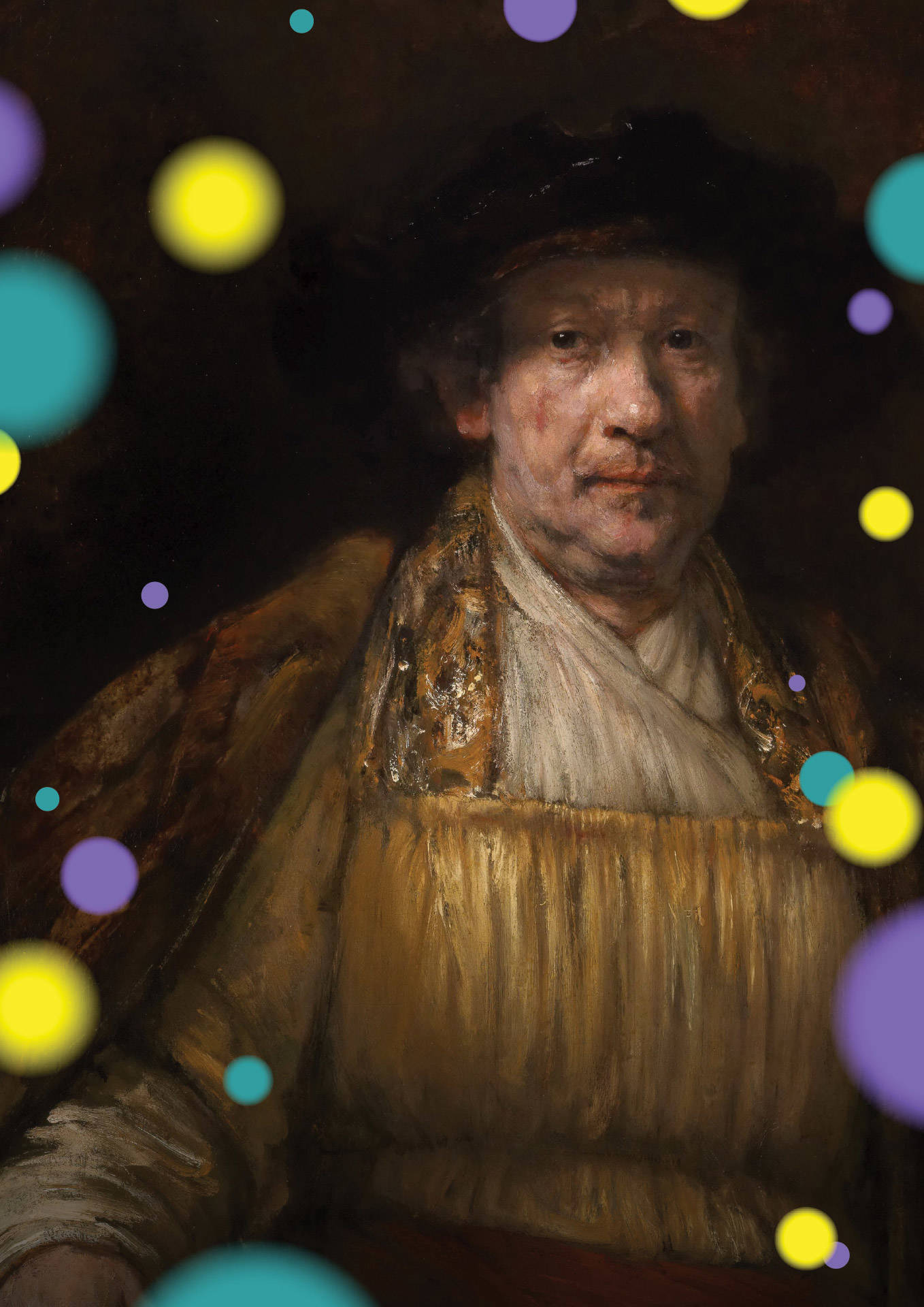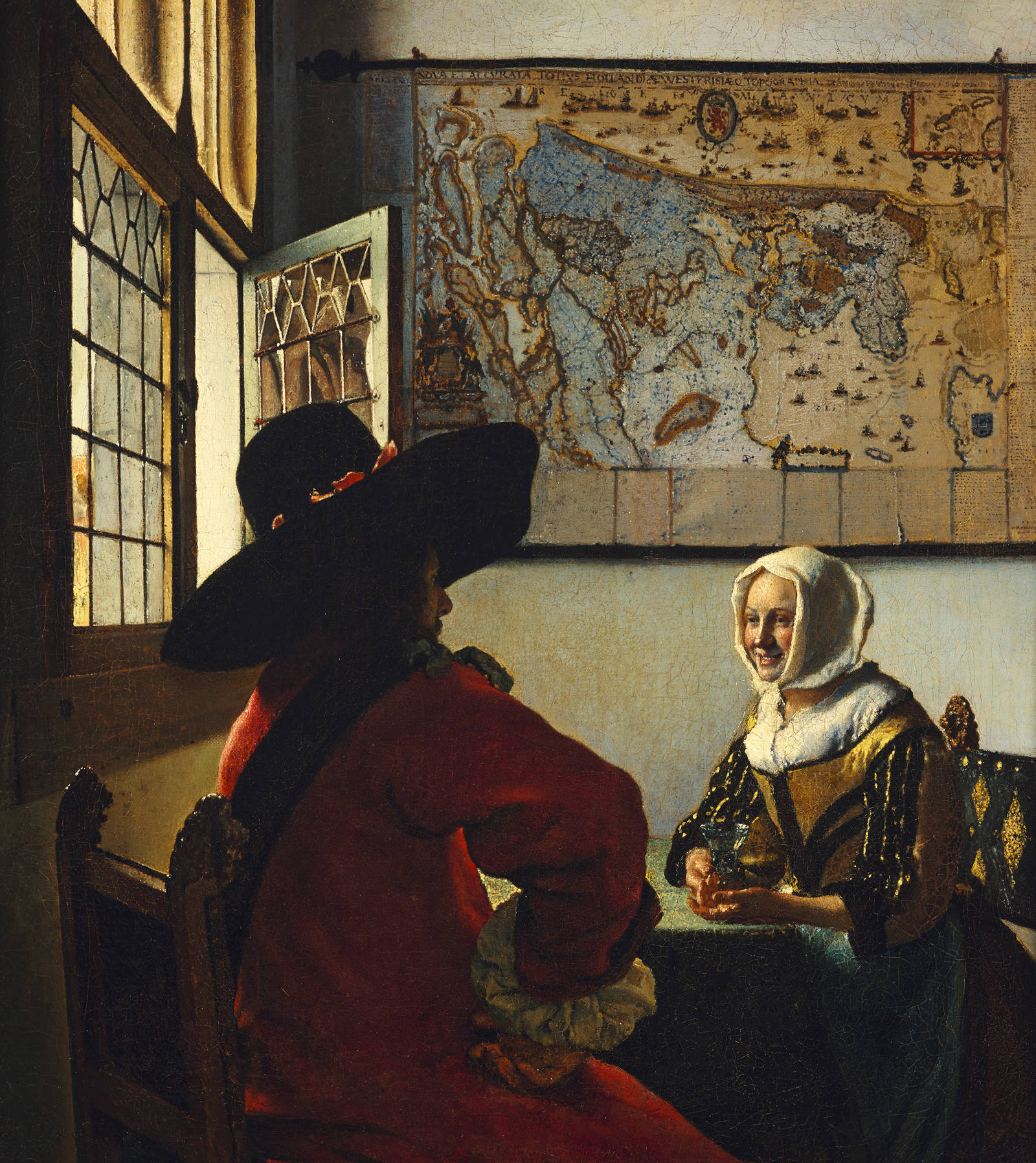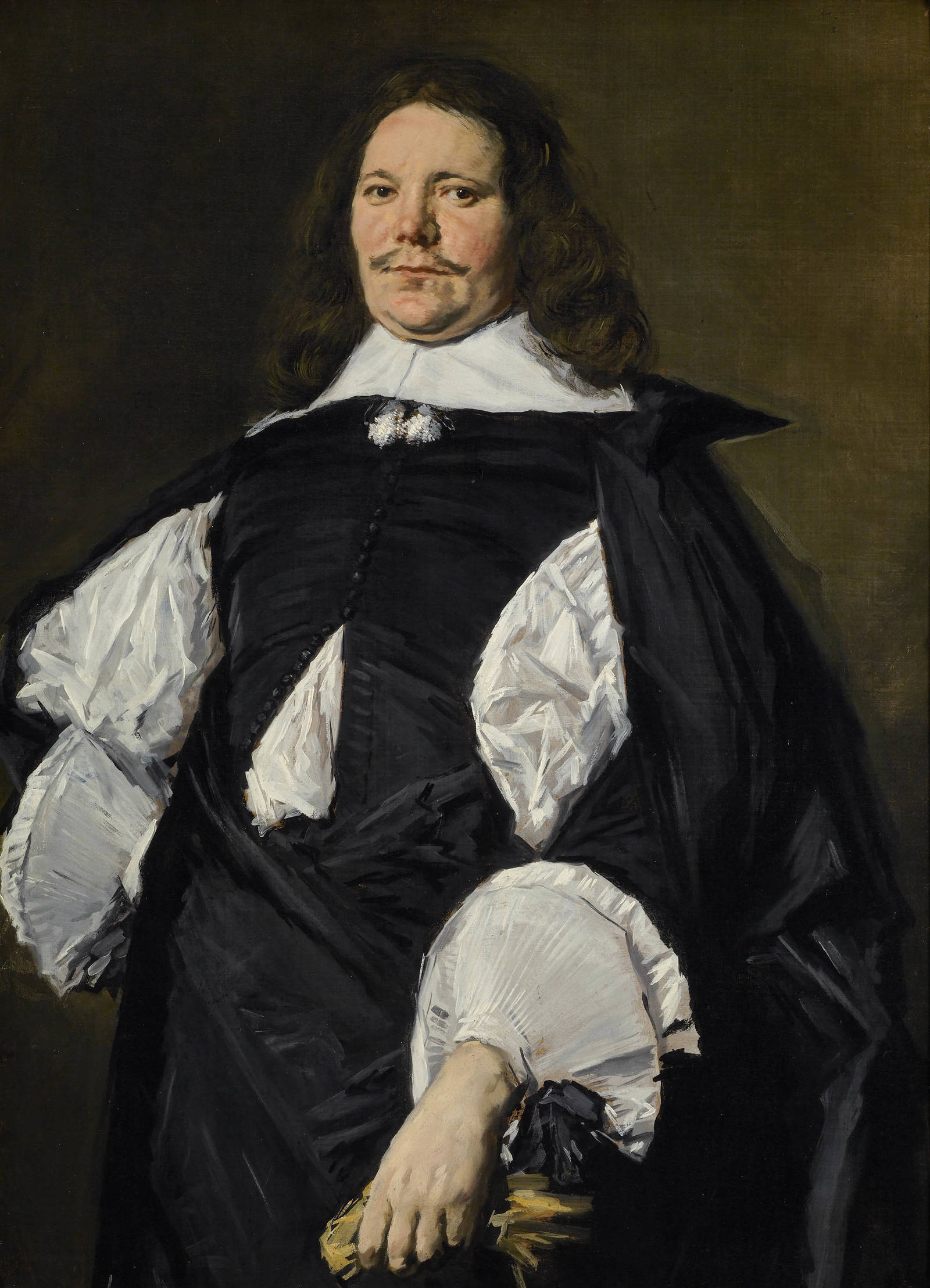29 September 2022 – 15 January 2023
The Mauritshuis will round off its bicentenary year with a very special exhibition, featuring ten paintings by Dutch masters from The Frick Collection in New York. For the first time in its existence, the American museum will loan these items to a European museum, while its own building is undergoing renovation. One of the paintings that will temporarily exchange New York for The Hague is Rembrandt’s acclaimed Self-portrait of 1658, a painting of exceptional quality. Rembrandt painted many self-portraits, but this one is acknowledged by experts to be one of the most impressive of all. In addition, the museum may welcome a Vermeer, Hals, Ruysdael and Cuyp, among others. ≈
Masterpiece by Frans Hals
The third top piece flown over from New York is Portrait of a man by Frans Hals. Nothing is known about the commissioner: the portrait bears no family crests or inscriptions mentioning age. What is known is that Hals made this portrait towards the end of his life. He was then in his late seventies, and used a loose and spontaneous painting technique. The portrait has a lively character due to the broad strokes of white paint on the shirt, collar and cuffs.
Of the ten paintings in the exhibition, Rembrandt’s 1658 Self-portrait will be the absolute highlight. This masterpiece will be the largest work in the exhibition (134 x 104 cm), and is the most impressive of the 40-plus self-portraits Rembrandt painted during his career. Rembrandt made this self-portrait when he was 52, at a time when he was experiencing many setbacks, having been declared bankrupt two years earlier and forced to sell his own collection and the contents of his home, and then to move house. The master depicted himself in old-fashioned, 16th-century attire, to which some oriental motifs have been added. Rembrandt thus presents himself as a celebrated painter of the past. There is no painter’s cap or palette, but the lustrous gold fabric of his robe was no coincidental choice. Rembrandt will undoubtedly have read in Karel van Mander’s famous Schilder-Boeck (‘The Book of Painters’) of 1604 how famous 16th-century painters like Jan Gossaert and Lucas van Leyden dressed in gold robes as a sign of their high status.
Johannes Vermeer (1632-1675), Officer and Laughing Girl, c.1657. Canvas, 51 x 46 cm. The Frick Collection, New York. Photo: Joseph Coscia Jr
Vermeer's Officer and Laughing Girl
The Mauritshuis can now temporarily display four Vermeers. One of Johannes Vermeer's most attractive genre paintings is on display in the exhibition Manhattan Masters. The Soldier and Smiling Girl (c. 1657) was acquired by Frick in 1911. The painting highlights a scene from everyday life in which a young woman is placed in the light so that the viewer can clearly see that she is fully focused on the soldier opposite her. The woman has a glass of white wine in her hands. It seems innocent, but in seventeenth-century Holland, drinking wine was discouraged; it would make you debauched. As to the relationship between the two figures, Vermeer leaves you guessing as a viewer.
.


